How to draw Aeroplane for kids - step by step - Fact - An airplane or aeroplane (informally plane) is a powered, fixed-wing aircraft that is propelled forward by thrust from a jet engine or propeller. Airplanes come in a variety of sizes, shapes, and wing configurations.
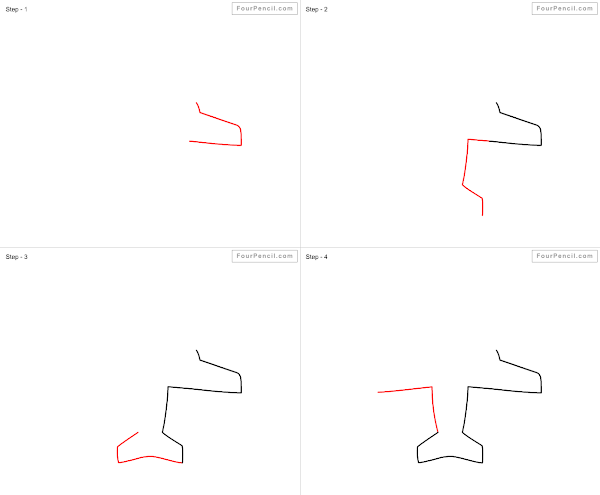
How to draw Aeroplane for kids - step by step - Fact - The broad spectrum of uses for airplanes includes recreation, transportation of goods and people, military, and research. Commercial aviation is a massive industry involving the flying of tens of thousands of passengers daily on airliners.

How to draw Aeroplane for kids - step by step - Fact - Most airplanes are flown by a pilot on board the aircraft, but some are designed to be remotely or computer-controlled.

How to draw Aeroplane for kids - step by step - Fact - The Wright brothers invented and flew the first airplane in 1903, recognized as "the first sustained and controlled heavier-than-air powered flight".
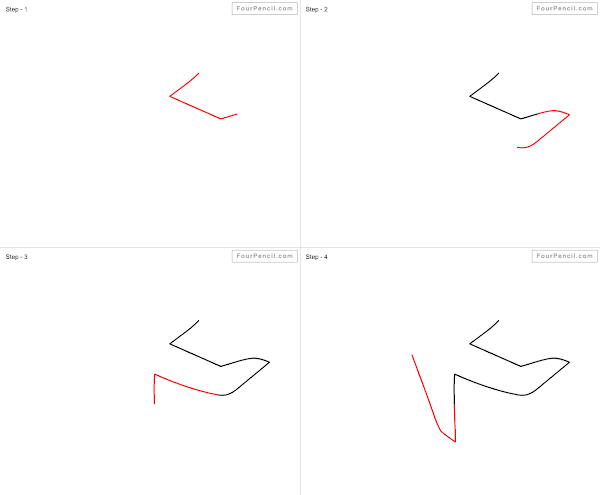
How to draw Aeroplane for kids - step by step - Fact - They built on the works of Sir George Cayley dating from 1799, when he set forth the concept of the modern airplane (and later built and flew models and successful passenger-carrying gliders). Between 1867 and 1896, the German pioneer of human aviation Otto Lilienthal also studied heavier-than-air flight.

How to draw Aeroplane for kids - step by step - Fact - Following its limited use in World War I, aircraft technology continued to develop. Airplanes had a presence in all the major battles of World War II. The first jet aircraft was the German Heinkel He 178 in 1939. The first jet airliner, the de Havilland Comet, was introduced in 1952. The Boeing 707, the first widely successful commercial jet, was in commercial service for more than 50 years, from 1958 to 2010.

How to draw Aeroplane for kids - step by step - Fact - First attested in English in the late 19th century (prior to the first sustained powered flight), the word airplane, like aeroplane, derives from the French aéroplane, which comes from the Greek ἀήρ (aēr), "air" and either Latin planus, "level", or Greek πλάνος (planos), "wandering". "Aéroplane" originally referred just to the wing, as it is a plane moving through the air. In an example of synecdoche, the word for the wing came to refer to the entire aircraft.
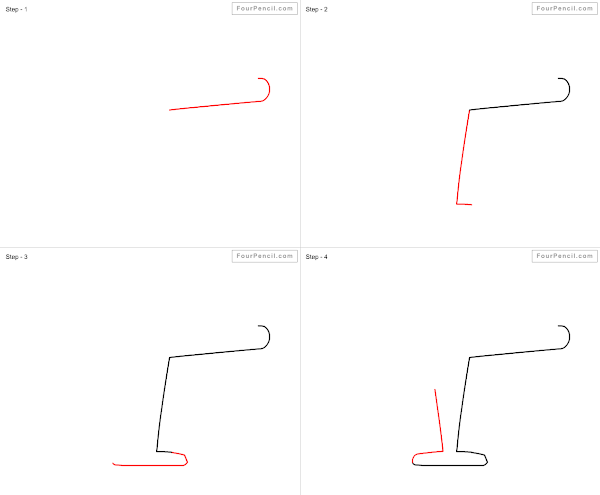
How to draw Aeroplane for kids - step by step - Fact - In the United States and Canada, the term "airplane" is used for powered fixed-wing aircraft. In the United Kingdom and most of the Commonwealth, the term "aeroplane" is usually applied to these aircraft.

How to draw Aeroplane easy - step by step - Fact - Many stories from antiquity involve flight, such as the Greek legend of Icarus and Daedalus, and the Vimana in ancient Indian epics. Around 400 BC in Greece, Archytas was reputed to have designed and built the first artificial, self-propelled flying device, a bird-shaped model propelled by a jet of what was probably steam, said to have flown some 200 m (660 ft).[8][9] This machine may have been suspended for its flight.

How to draw Aeroplane easy - step by step - Fact - Some of the earliest recorded attempts with gliders were those by the 9th-century poet Abbas Ibn Firnas and the 11th-century monk Eilmer of Malmesbury; both experiments injured their pilots. Leonardo da Vinci researched the wing design of birds and designed a man-powered aircraft in his Codex on the Flight of Birds (1502).

How to draw Aeroplane for Beginners - Fact - In 1799, Sir George Cayley set forth the concept of the modern airplane as a fixed-wing flying machine with separate systems for lift, propulsion, and control. Cayley was building and flying models of fixed-wing aircraft as early as 1803, and he built a successful passenger-carrying glider in 1853.
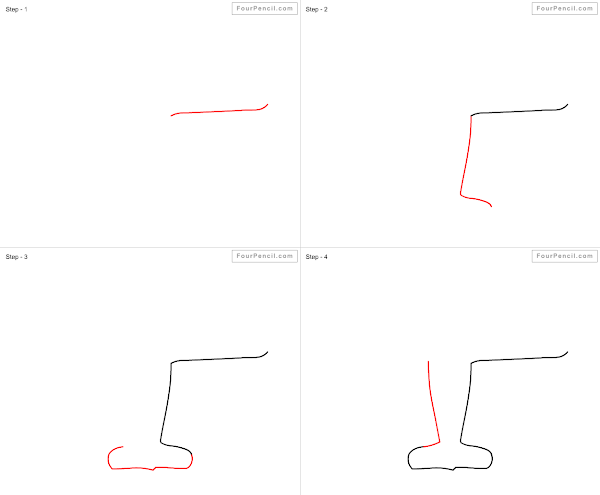
How to draw Aeroplane for Beginners - Fact - In 1856, Frenchman Jean-Marie Le Bris made the first powered flight, by having his glider "L'Albatros artificiel" pulled by a horse on a beach.[citation needed] Then Alexander F. Mozhaisky also made some innovative designs. In 1883, the American John J. Montgomery made a controlled flight in a glider. Other aviators who made similar flights at that time were Otto Lilienthal, Percy Pilcher, and Octave Chanute.

How to draw Aeroplane for Children - Fact - Sir Hiram Maxim built a craft that weighed 3.5 tons, with a 110-foot (34-meter) wingspan that was powered by two 360-horsepower (270-kW) steam engines driving two propellers. In 1894, his machine was tested with overhead rails to prevent it from rising.

How to draw Aeroplane for Children - Fact - The test showed that it had enough lift to take off. The craft was uncontrollable, which Maxim, it is presumed, realized, because he subsequently abandoned work on it.
How to draw Aeroplane for Preschoolers - Fact - In the 1890s, Lawrence Hargrave conducted research on wing structures and developed a box kite that lifted the weight of a man. His box kite designs were widely adopted. Although he also developed a type of rotary aircraft engine, he did not create and fly a powered fixed-wing aircraft.
How to draw Aeroplane for Preschoolers - Fact - Between 1867 and 1896 the German pioneer of human aviation Otto Lilienthal developed heavier-than-air flight. He was the first person to make well-documented, repeated, successful gliding flights.
The Wright brothers flights in 1903 are recognized by the Fédération Aéronautique Internationale (FAI), the standard setting and record-keeping body for aeronautics, as "the first sustained and controlled heavier-than-air powered flight".
By 1905, the Wright Flyer III was capable of fully controllable, stable flight for substantial periods. The Wright brothers credited Otto Lilienthal as a major inspiration for their decision to pursue manned flight.
 How to draw Aeroplane for kids - step by step - Fact - The broad spectrum of uses for airplanes includes recreation, transportation of goods and people, military, and research. Commercial aviation is a massive industry involving the flying of tens of thousands of passengers daily on airliners.
How to draw Aeroplane for kids - step by step - Fact - The broad spectrum of uses for airplanes includes recreation, transportation of goods and people, military, and research. Commercial aviation is a massive industry involving the flying of tens of thousands of passengers daily on airliners.  How to draw Aeroplane for kids - step by step - Fact - Most airplanes are flown by a pilot on board the aircraft, but some are designed to be remotely or computer-controlled.
How to draw Aeroplane for kids - step by step - Fact - Most airplanes are flown by a pilot on board the aircraft, but some are designed to be remotely or computer-controlled.  How to draw Aeroplane for kids - step by step - Fact - The Wright brothers invented and flew the first airplane in 1903, recognized as "the first sustained and controlled heavier-than-air powered flight".
How to draw Aeroplane for kids - step by step - Fact - The Wright brothers invented and flew the first airplane in 1903, recognized as "the first sustained and controlled heavier-than-air powered flight".  How to draw Aeroplane for kids - step by step - Fact - They built on the works of Sir George Cayley dating from 1799, when he set forth the concept of the modern airplane (and later built and flew models and successful passenger-carrying gliders). Between 1867 and 1896, the German pioneer of human aviation Otto Lilienthal also studied heavier-than-air flight.
How to draw Aeroplane for kids - step by step - Fact - They built on the works of Sir George Cayley dating from 1799, when he set forth the concept of the modern airplane (and later built and flew models and successful passenger-carrying gliders). Between 1867 and 1896, the German pioneer of human aviation Otto Lilienthal also studied heavier-than-air flight.  How to draw Aeroplane for kids - step by step - Fact - Following its limited use in World War I, aircraft technology continued to develop. Airplanes had a presence in all the major battles of World War II. The first jet aircraft was the German Heinkel He 178 in 1939. The first jet airliner, the de Havilland Comet, was introduced in 1952. The Boeing 707, the first widely successful commercial jet, was in commercial service for more than 50 years, from 1958 to 2010.
How to draw Aeroplane for kids - step by step - Fact - Following its limited use in World War I, aircraft technology continued to develop. Airplanes had a presence in all the major battles of World War II. The first jet aircraft was the German Heinkel He 178 in 1939. The first jet airliner, the de Havilland Comet, was introduced in 1952. The Boeing 707, the first widely successful commercial jet, was in commercial service for more than 50 years, from 1958 to 2010.  How to draw Aeroplane for kids - step by step - Fact - First attested in English in the late 19th century (prior to the first sustained powered flight), the word airplane, like aeroplane, derives from the French aéroplane, which comes from the Greek ἀήρ (aēr), "air" and either Latin planus, "level", or Greek πλάνος (planos), "wandering". "Aéroplane" originally referred just to the wing, as it is a plane moving through the air. In an example of synecdoche, the word for the wing came to refer to the entire aircraft.
How to draw Aeroplane for kids - step by step - Fact - First attested in English in the late 19th century (prior to the first sustained powered flight), the word airplane, like aeroplane, derives from the French aéroplane, which comes from the Greek ἀήρ (aēr), "air" and either Latin planus, "level", or Greek πλάνος (planos), "wandering". "Aéroplane" originally referred just to the wing, as it is a plane moving through the air. In an example of synecdoche, the word for the wing came to refer to the entire aircraft.  How to draw Aeroplane for kids - step by step - Fact - In the United States and Canada, the term "airplane" is used for powered fixed-wing aircraft. In the United Kingdom and most of the Commonwealth, the term "aeroplane" is usually applied to these aircraft.
How to draw Aeroplane for kids - step by step - Fact - In the United States and Canada, the term "airplane" is used for powered fixed-wing aircraft. In the United Kingdom and most of the Commonwealth, the term "aeroplane" is usually applied to these aircraft.  How to draw Aeroplane easy - step by step - Fact - Many stories from antiquity involve flight, such as the Greek legend of Icarus and Daedalus, and the Vimana in ancient Indian epics. Around 400 BC in Greece, Archytas was reputed to have designed and built the first artificial, self-propelled flying device, a bird-shaped model propelled by a jet of what was probably steam, said to have flown some 200 m (660 ft).[8][9] This machine may have been suspended for its flight.
How to draw Aeroplane easy - step by step - Fact - Many stories from antiquity involve flight, such as the Greek legend of Icarus and Daedalus, and the Vimana in ancient Indian epics. Around 400 BC in Greece, Archytas was reputed to have designed and built the first artificial, self-propelled flying device, a bird-shaped model propelled by a jet of what was probably steam, said to have flown some 200 m (660 ft).[8][9] This machine may have been suspended for its flight.  How to draw Aeroplane easy - step by step - Fact - Some of the earliest recorded attempts with gliders were those by the 9th-century poet Abbas Ibn Firnas and the 11th-century monk Eilmer of Malmesbury; both experiments injured their pilots. Leonardo da Vinci researched the wing design of birds and designed a man-powered aircraft in his Codex on the Flight of Birds (1502).
How to draw Aeroplane easy - step by step - Fact - Some of the earliest recorded attempts with gliders were those by the 9th-century poet Abbas Ibn Firnas and the 11th-century monk Eilmer of Malmesbury; both experiments injured their pilots. Leonardo da Vinci researched the wing design of birds and designed a man-powered aircraft in his Codex on the Flight of Birds (1502).  How to draw Aeroplane for Beginners - Fact - In 1799, Sir George Cayley set forth the concept of the modern airplane as a fixed-wing flying machine with separate systems for lift, propulsion, and control. Cayley was building and flying models of fixed-wing aircraft as early as 1803, and he built a successful passenger-carrying glider in 1853.
How to draw Aeroplane for Beginners - Fact - In 1799, Sir George Cayley set forth the concept of the modern airplane as a fixed-wing flying machine with separate systems for lift, propulsion, and control. Cayley was building and flying models of fixed-wing aircraft as early as 1803, and he built a successful passenger-carrying glider in 1853.  How to draw Aeroplane for Beginners - Fact - In 1856, Frenchman Jean-Marie Le Bris made the first powered flight, by having his glider "L'Albatros artificiel" pulled by a horse on a beach.[citation needed] Then Alexander F. Mozhaisky also made some innovative designs. In 1883, the American John J. Montgomery made a controlled flight in a glider. Other aviators who made similar flights at that time were Otto Lilienthal, Percy Pilcher, and Octave Chanute.
How to draw Aeroplane for Beginners - Fact - In 1856, Frenchman Jean-Marie Le Bris made the first powered flight, by having his glider "L'Albatros artificiel" pulled by a horse on a beach.[citation needed] Then Alexander F. Mozhaisky also made some innovative designs. In 1883, the American John J. Montgomery made a controlled flight in a glider. Other aviators who made similar flights at that time were Otto Lilienthal, Percy Pilcher, and Octave Chanute.  How to draw Aeroplane for Children - Fact - Sir Hiram Maxim built a craft that weighed 3.5 tons, with a 110-foot (34-meter) wingspan that was powered by two 360-horsepower (270-kW) steam engines driving two propellers. In 1894, his machine was tested with overhead rails to prevent it from rising.
How to draw Aeroplane for Children - Fact - Sir Hiram Maxim built a craft that weighed 3.5 tons, with a 110-foot (34-meter) wingspan that was powered by two 360-horsepower (270-kW) steam engines driving two propellers. In 1894, his machine was tested with overhead rails to prevent it from rising.  How to draw Aeroplane for Children - Fact - The test showed that it had enough lift to take off. The craft was uncontrollable, which Maxim, it is presumed, realized, because he subsequently abandoned work on it.
How to draw Aeroplane for Preschoolers - Fact - In the 1890s, Lawrence Hargrave conducted research on wing structures and developed a box kite that lifted the weight of a man. His box kite designs were widely adopted. Although he also developed a type of rotary aircraft engine, he did not create and fly a powered fixed-wing aircraft.
How to draw Aeroplane for Preschoolers - Fact - Between 1867 and 1896 the German pioneer of human aviation Otto Lilienthal developed heavier-than-air flight. He was the first person to make well-documented, repeated, successful gliding flights.
The Wright brothers flights in 1903 are recognized by the Fédération Aéronautique Internationale (FAI), the standard setting and record-keeping body for aeronautics, as "the first sustained and controlled heavier-than-air powered flight".
By 1905, the Wright Flyer III was capable of fully controllable, stable flight for substantial periods. The Wright brothers credited Otto Lilienthal as a major inspiration for their decision to pursue manned flight.
How to draw Aeroplane for Children - Fact - The test showed that it had enough lift to take off. The craft was uncontrollable, which Maxim, it is presumed, realized, because he subsequently abandoned work on it.
How to draw Aeroplane for Preschoolers - Fact - In the 1890s, Lawrence Hargrave conducted research on wing structures and developed a box kite that lifted the weight of a man. His box kite designs were widely adopted. Although he also developed a type of rotary aircraft engine, he did not create and fly a powered fixed-wing aircraft.
How to draw Aeroplane for Preschoolers - Fact - Between 1867 and 1896 the German pioneer of human aviation Otto Lilienthal developed heavier-than-air flight. He was the first person to make well-documented, repeated, successful gliding flights.
The Wright brothers flights in 1903 are recognized by the Fédération Aéronautique Internationale (FAI), the standard setting and record-keeping body for aeronautics, as "the first sustained and controlled heavier-than-air powered flight".
By 1905, the Wright Flyer III was capable of fully controllable, stable flight for substantial periods. The Wright brothers credited Otto Lilienthal as a major inspiration for their decision to pursue manned flight.

















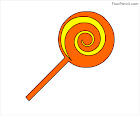
k
ReplyDelete